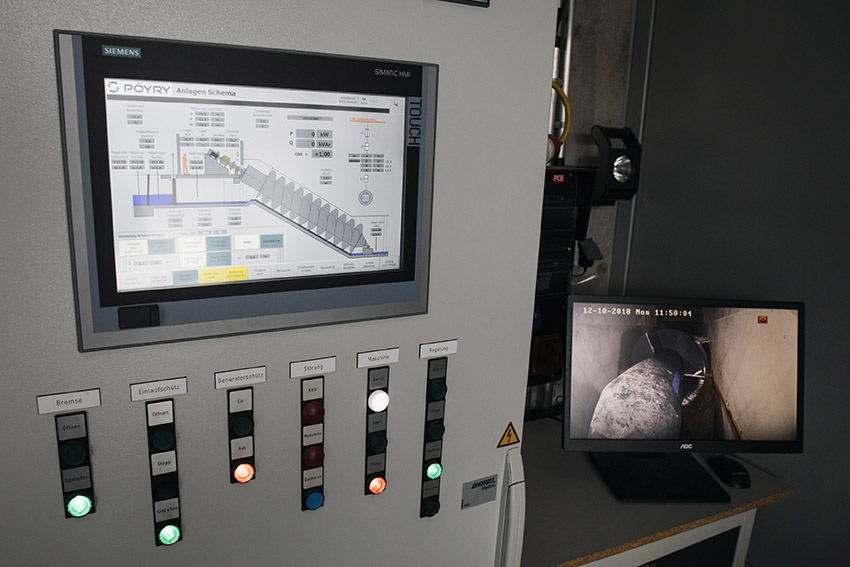EU funding has enabled the construction of a small hydroelectric power plant next to the Wehr 1 weir system, on the Danube Island in central Vienna. The plant consists of an underground water supply, a small building housing generation and control apparatus, a 15 m-long, 3.8 m-high screw turbine that is integrated into the weir system and a 60 m-long discharge tunnel. Water passes over the screw turbine at the weir and makes it rotate. The generator then extracts this rotational energy.
Hydroelectric power plant on the Danube provides green energy for Viennese households
- 04 September 2021
Generating electricity from hydropower is environmentally friendly. This specific plant will generate 400 000 kWh of clean electricity annually and save around 175 tonnes of CO₂. The project is small in size, but remarkable in that it produces clean electricity for well over 100 Viennese households and is almost unnoticed in the middle of the city.
The plant has a capacity of some 100 kW and can produce over 400 000 kWh of renewable electricity annually – enough for 130 Viennese households. This saves around 175 tonnes a year in CO2 emissions.
Aside from the small building, which stands in the weir car park, all components of the system are underground. They thus have no negative visual, environmental or structural impact on the surrounding green space, nor do they cause any noise pollution. The low suction power of the plant means it poses no danger to people bathing in the area, or to fish.
A key flood defence
The Danube Island is a narrow strip of land lying between the River Danube and the New Danube, a channel on the eastern side of the river that was excavated during the 1970s and 1980s to hold excess water and protect Vienna against floods. The material displaced by the excavation was used to create the island, which has become a popular recreational area. The New Danube is used extensively for water sports.
Since the Danube was dammed at the Freudenau power plant in the 1990s, there has been a difference in elevation between the river and its side channel of about 4 m. Groundwater and leachate from the Danube are therefore able to percolate through the Danube Island into the New Danube. As the water in the side channel must not rise beyond a certain level, constant drainage through two weir systems was previously necessary. Wehr 1, which consists of five weirs, each of them 24 m by 4 m, is one of these systems.
Exploiting energy potential
The difference in elevation between the two bodies of water and the accompanying slope provides the potential for generation of hydroelectricity, which puts water that would otherwise have just drained away to good use. Vienna’s municipal water department recognised this untapped potential and established a partnership with energy company Wien Energie to exploit it. Joint deliberations subsequently resulted in the conception and development of the new plant.
After a trial period of several months, the power plant entered into service in June 2017. Technical operations at the facility, including monitoring, maintenance and repair work, are the responsibility of the municipal water department. The weir continues to fulfil its original flood protection role and in the event of a flood or other emergency, the plant is simply shut down.
As well as ensuring a supply of environmentally friendly electricity, the plant should extend the lifespan of the weir as it no longer has to be opened and closed for drainage purposes several times a day. Another benefit of the project comes from the replacement of the elaborate manual control mechanism of the weir by a fully automatic hydroelectric power control system.
Total investment and EU funding
Total investment for the project “Small hydro power station ‘Wehr 1’” is EUR 559 357, with the EU’s European Regional Development Fund contributing EUR 251 711 through the “Investments in Growth and Employment Austria” Operational Programme for the 2014-2020 programming period. The investment falls under the priority “Transition towards a low-carbon economy”.

